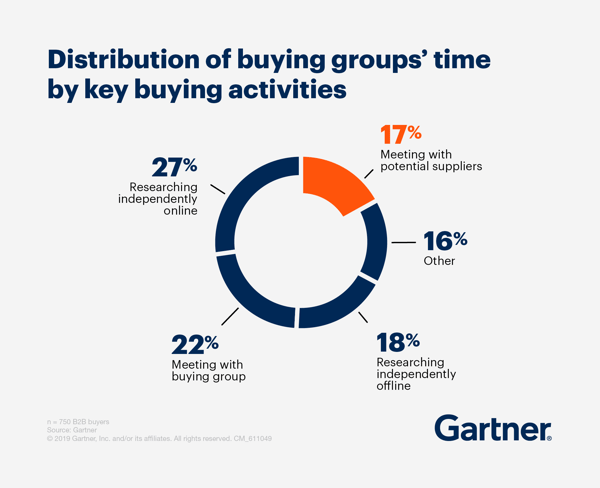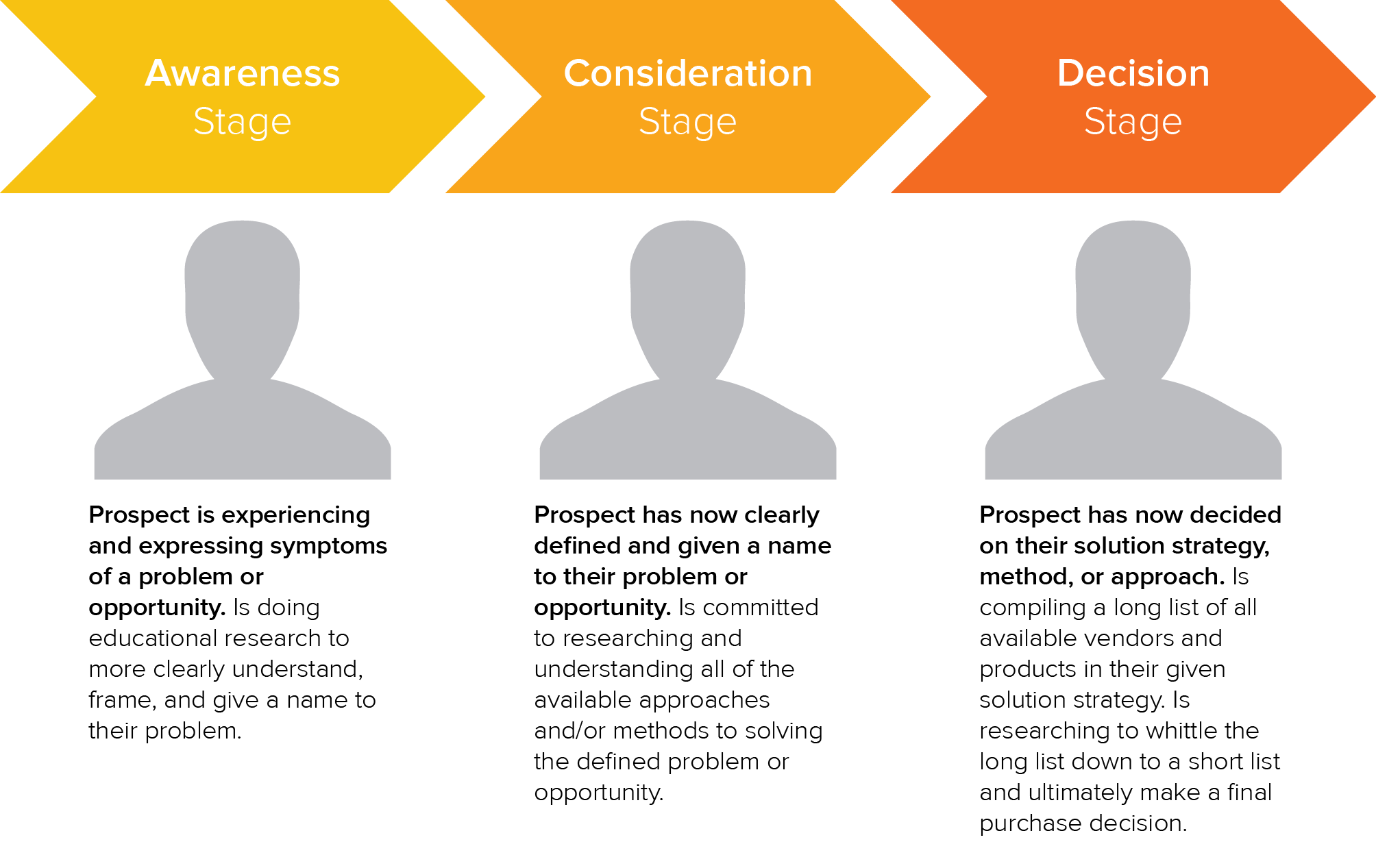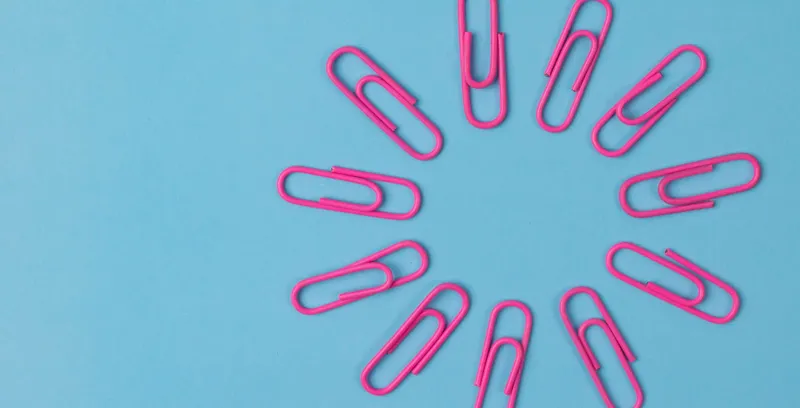Your old-school sales process no longer cuts it. Today B2B buyer's journey requires a stronger alignment with a customer-focused process.
HubSpot defines the buyer's journey as the process buyers go through to become aware of, consider and evaluate, and decide to purchase a new product or service.
Today, buyers don't see any value in being prospected, demoed, or closed. They rather look for additional information about your product or service that they can't find online. According to SiriusDecisions, 67% of the buyer’s journey is now done digitally!
The plethora of quality information on the internet makes it very easy for buyers to collect information independently. And that means your sales reps have less access and fewer opportunities to influence their decisions.
In fact‚ Gartner's research finds that when B2B buyers are considering a purchase‚ they spend only 17% of that time meeting with potential suppliers. And if you consider that they compare multiple suppliers‚ the amount of time they spend with your sales rep may only be 5-6%.

Sales leaders often attribute this lack of customer access to a failure on the part of sellers to deliver enough value as part of a typical sales interaction. However, the problem is rooted far less in reps’ struggles to sell and far more in customers’ struggles to buy.
The typical buying group for a complex B2B solution involves 6-10 decision makers‚ each armed with 4-5 pieces of information they’ve gathered independently and must deconflict with the group. At the same time, the set of options and solutions buying groups can consider is expanding as new technologies, products, suppliers, and services emerge.
These dynamics make it increasingly difficult for customers to make purchases. In fact, more than three-quarters of the customers Gartner surveyed described their purchase as very complex or difficult.
So as a successful salesperson, you better align your sales process with the buyer's context by understanding the buyer's journey. Once your reps are able to connect the two they can:
- Improve the buyer experience
- Build value for your product or service
- Increase win rate, and
- Move prospects more quickly through the sales funnel
In this article, we'll show you how to think through the buyer’s journey when working with prospects in your pipeline. If you’re ready, let’s get started!
How is it different from B2C buyers’ journey?
Sell to an entire team
A B2B buyer’s journey is unique in that, a B2B customer is often more than a single customer. In B2B, you are selling to an entire team or group of people all of whom might have input in the purchase decision. According to a recent study, 79% of B2B buyers said there are 1-6 people
involved in the purchase process. Hence, the decision-making process is longer and more tedious. This is a clear contrast with the B2C buyers’ journey, where the buyer is often an individual and the purchase decision is faster.
Bigger deal size
B2B transactions are typically larger both in terms of deal/order size and total revenue per customer. These deals can take a lot longer to develop. But when they do, you often make a lot more money on each sale.
This also means that, as compared to B2C companies, you can be more choosy and afford to pay more to acquire each lead to make sure they’ll be the right fit for your business. This is why B2B companies don’t need to go viral on social media, but B2C ones often do.
Longer sales cycle
When you sell a large deal to a big team of decision-makers, the inevitable result is longer sales cycles. The average B2B buying cycle is 6-12 months, which is usually much longer than B2C that doesn’t often take long to materialize. Most consumer purchases throughout the course of a year fall in the ~$100 range. And these can often be made on impulse without too much thought, research, or in-depth analysis.
That means you need a much, much slower ramp from attention to interest to purchase. You have to break down your marketing and sales activities into bite-sized chunks that can be consumed over the course of a few months, and provide more education and value upfront to help all of the various decision-makers get on board. In other words, you need a logical progression of micro-conversions to seamlessly lead people from one step to another.
Equally emotional if not more
On the surface, it seems like B2B decision-making would be more logical while B2C is more emotional. However, that’s not the case. According to CMO.com, on average, B2B customers are significantly more emotionally connected to their vendors and service providers than consumers.
According to Bain, B2B offerings provide customers with 40 distinct kinds of value organized into a pyramid with five levels. Yes, there are a few specific things B2B buyers look to make sure a vendor or partner is in the right ballpark (a logical decision). But after that, it becomes more about who’s a better ‘fit’ than which one is providing the lowest price (an emotional decision).
What are the stages?
From a high-level perspective, the buyer’s journeys consist of a three-step process:
- Awareness Stage: The buyer realizes they have a problem.
- Consideration Stage: The buyer defines their problem and researches options to solve it.
- Decision Stage: The buyer chooses a solution.

When we break the buyer’s journey down and set it against the classical sales process, it’s easy to spot the alignment shortages many of today’s sales teams are facing. 
To improve your sales effectiveness, you have to invest time and revise your sales process. Rather than centering it on a scripted sequence of product-first messages, you have to focus first on guiding your buyers through their journey. When you align your sales process to buyers’ needs it should look like this: 
What to do at each stage?
Now let’s deep dive into each stage and see what you can do to align your sales process to the buyer’s journey.
1. Awareness of need
At this stage, the buyer realizes they have a problem. They identify and define a challenge/issue or an opportunity they want to pursue. They’re asking themselves if the need is significant enough to warrant action.
MARKETING: Your job is to create awareness of your product, service, or company so that your buyers begin to understand what you do, and how you can help them. Your marketing department should create content focused on your buyer’s pain points — not your product or brand.
SALES: The best sales professionals don’t merely watch for the buyer’s journey to start — they make it start. For instance, in order to enter the discussion in this early part of the journey, you might take cues from broad industry issues and leverage them as insights to shape your prospect’s thinking.
2. Investigate options
Once your buyers begin to realize that they have a particular pain point, the research begins. The first stage of research begins with general, broad search terms as buyers explore the options at their disposal. At this stage, they typically look for educational material, customer reviews, and testimonials.
As they do some research, they’ll begin to understand which criteria do and do not meet their needs. At this point, they might eliminate some of the vendors who don’t provide the functionality or service that they’re looking for, narrowing their focus to just a few competing companies.
They also define the desired outcomes, clarify which stakeholders will be involved and how success will be measured. Often, they use this information to help draft an RFP and establish a budget.
MARKETING: Educational content like white papers, analyst reports, and industry reports are going to be critical at this stage. Make sure you have these types of resources on your website. Consider using a marketing automation tool and build lead nurturing campaigns to gradually deliver this content to prospects.
SALES: Sales professionals need to get engaged with prospects at this point because stakeholders will decide if they can develop a solution in-house. To earn the sale, it’s critical for your sales reps to begin to get an accurate read on the customer’s needs and demonstrate how you will deliver results that exceed an internal solution.
3. Committing to change
At this stage, buyers have clearly defined the goal or challenge and have committed to addressing it. Once they narrow down their choices to just a few companies, they’ll return to the research stage again. But this time diving even deeper into each company’s specific offerings to see how they can address their particular pain points.
This is the stage where they’ll start reaching out to sales reps for further inquiries or personalized product demos so that they can really drill down into the features that matter to their teams. At this point, more stakeholders might enter the picture. And this brings more biases and diverging opinions into the mix. As a result, priorities might change along with decision criteria and requirements. ROI enters the discussion.
MARKETING: As your buyers continue their research, you can update their lead scores in your marketing automation tool to further qualify them and keep track of their growing interest.
SALES: Sales reps have to help the buyer understand what’s important and what are the benefits of making a change. They always have to act like a trusted advisor and put themselves in the buyer’s shoes.
4. Solution selection
This is the stage, where buyers have to secure buy-in from upper management. To get a sign-off from their c-level executives, your buyers begin focusing on content that contains information about pricing, ROI, and the bottom line to justify their expenditure.
MARKETING: When creating content for this stage, remember to speak the language of the C-suite. Drop the marketing-friendly phrases like “creative new approach” and “cutting-edge technology” and focus on the big picture like “increase revenue” and “return on investment”.
SALES: At this stage, your sales reps have to act like a consultant. They have to help the buyer convince internal stakeholders. Proving the value of your solution becomes very critical. You have to convince the buyer that your solution is the best.
5. Validate choice
At this point, buyers have already decided on a solution category. Once they have the support of upper management, they’re ready to select a vendor and make a purchase. At this point, they’ll start thinking about preparation, implementation, quick start costs, and customer support — the final items that will determine which solution best fits their needs and budget.
At this point, the customer gets serious about costs. They consider the risk of doing nothing and the risk of choosing the wrong solution. Customers need assurances that implementation will be fast.
MARKETING: It’s finally time to get brand-specific with your content. Have a number of case studies and customer testimonials on hand to show prospects what others have achieved by choosing you, and how positive their experience has been.
SALES: Each stakeholder has a different perspective on the solution. Each assigns a different value to the capabilities. Your sales reps have to create this alignment and drive the customer’s momentum by articulating the opportunity costs associated with the status quo.
6. Purchase
Finally, after all these months, your buyers have selected a vendor and are ready to purchase. It’s time for paperwork, setup, and implementation. At this stage, price and terms enter the discussion. Customers will use negotiations to defray risks by seeking a lower price to reduce financial exposure.
While procurement, finance, and all other stakeholders are comparing the implicit and explicit costs associated with your solution, your buyer will continue to research best practices, implementation guides, and more to make sure they’re ready to hit the ground running with their new solution.
MARKETING: Consider creating a drip nurturing program for your customers with helpful content on the more advanced features of your product and tips for using your product more effectively and efficiently. If you can help them see more value from your product, they’re far more likely to remain your customer when renewal time comes around.
SALES: The buyer will consider what they’re willing to trade or concede to get the best value. Sales professionals face customer objections. The goal is to resolve objections rather than overcome them. Overcoming an objection can result in relinquishing terms to the customer or diminishing the scope of the sale.
Leverage sales technology for alignment
According to MIH, investments into streamlining processes and technology are also changing with the clear intent of optimizing the buyer experience. The top-three areas in spending include sales and support technology, investment in people, training and service interactions, and sales automation technology.
Understanding the modern buyer’s journey is difficult for two reasons. Firstly, it is a dynamic process. The buyer’s path is not linear. It has twists and turns and traces an ever-changing route. The sales professional must anticipate these movements to stay ahead of the next curve.
Secondly, it is obscure to most sales professionals because it happens behind closed doors, within the buyer’s business. As your sales rep works to advance his sales cycle, your prospect simultaneously works through a journey of their own. But you need an understanding of this unseen process because it governs the speed and distance of deals moving through the sales cycle.
And that’s where Digital Sales Rooms come into the picture. With a tool like GetAccept, you can continuously keep your prospects engaged throughout the sales cycle. And this will give you a clearer vision of your buyer’s journey.




